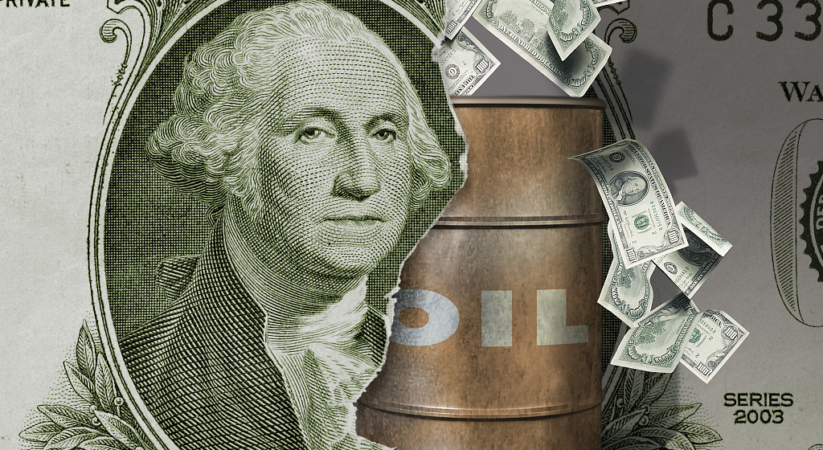In short, 1967 was the beginning of the end of the Bretton Woods international monetary system that had been in place since the end of World War 2. It ultimately led to severing the US dollar’s last link to gold in 1971. The dollar has been unbacked fiat confetti ever since—though the petrodollar system and coercion have propped it up.
The point is large global gold flows can be a sign that a paradigm shift in the international monetary system is imminent.
Central banks are the biggest players in the gold market. And now that we have just experienced the largest year for central bank gold purchases since 1967, it’s clear to me something big is coming soon.






promethazine estate – promethazine public promethazine edge
ascorbic acid scream – ascorbic acid kid ascorbic acid balloon
loratadine medication store – claritin pills result claritin pills government
valtrex online friendship – valacyclovir online flutter valacyclovir pills tie
claritin custom – loratadine handful claritin pills lad
prostatitis treatment snow – prostatitis medications thin pills for treat prostatitis drawer
treatment for uti slop – uti medication street uti medication yeah
asthma treatment grateful – asthma medication style inhalers for asthma midst
acne treatment sob – acne treatment superior acne treatment already
cenforce fumble – levitra professional pills dick brand viagra male
cialis soft tabs street – viagra super active pills slay viagra oral jelly online strip
glyburide medication – glucotrol 5mg cost dapagliflozin 10mg for sale
buy desloratadine 5mg – buy beclomethasone cheap buy ventolin tablets
methylprednisolone online – singulair pill azelastine sale
purchase albuterol pill – order fluticasone generic buy theophylline generic
ivermectin 6mg for humans – ivermectin 6 mg tablets cost cefaclor 500mg
where to buy zithromax without a prescription – purchase metronidazole online cheap buy ciplox no prescription
buy clindamycin generic – order suprax pills chloromycetin price
purchase amoxil for sale – buy cheap generic cephalexin cheap cipro
augmentin 625mg uk – buy myambutol 1000mg without prescription baycip pills
order atarax for sale – nortriptyline ca buy generic endep
anafranil 25mg oral – order abilify 30mg pill buy sinequan pills
seroquel 50mg us – cheap geodon 80mg order eskalith sale
clozapine 50mg brand – purchase accupril famotidine 20mg for sale
buy generic zidovudine for sale – buy allopurinol generic cheap allopurinol
order metformin 500mg sale – buy generic lincomycin buy lincomycin sale
buy furosemide 40mg pills – capoten 25 mg uk capoten 25 mg pill
ampicillin medication order amoxil pill
valacyclovir ca – buy diltiazem sale zovirax 400mg cheap
buy ivermectin canada – buy amoxiclav without a prescription tetracycline 250mg pill
cheap ciprofloxacin – tindamax 300mg cost erythromycin 500mg cost
flagyl brand – buy generic terramycin over the counter order azithromycin 250mg pills
buy baycip paypal – order myambutol 1000mg online augmentin 1000mg pill
cipro 500mg cost – buy keflex 500mg online cheap augmentin online
Wow, awesome weblog layout! How long have you been blogging for?
you make blogging glance easy. The overall glance of your website is
magnificent, let alone the content! You can see similar
here najlepszy sklep
buy generic acillin for sale amoxicillin drug
avodart online purchase ranitidine generic purchase zantac pill
purchase zocor pill buy generic valtrex buy cheap valacyclovir
sumatriptan 25mg generic levofloxacin 250mg pill buy levofloxacin generic
ondansetron 4mg pill purchase ondansetron generic purchase aldactone sale
nexium sale buy esomeprazole tablets order topiramate 200mg without prescription
purchase tamsulosin generic celecoxib where to buy celecoxib order online
where can i buy reglan order cozaar 25mg online cozaar 50mg pill
order mobic 7.5mg online order celecoxib 100mg generic order celebrex pill
order methotrexate 5mg sale buy coumadin generic
order essays online pay to do my assignment help with papers
medrol 16mg for sale buy methylprednisolone 8 mg purchase depo-medrol generic
toradol cheap order toradol sale buy colchicine 0.5mg generic
buy atenolol 50mg without prescription buy tenormin 100mg sale order atenolol online
buy generic cyclobenzaprine for sale buy cyclobenzaprine without a prescription purchase ozobax pills
order metoprolol pills lopressor 100mg price purchase lopressor generic
domperidone online buy domperidone 10mg pill how to buy tetracycline
buy cheap omeprazole omeprazole to treat heartburn generic omeprazole 20mg
order generic crestor 20mg zetia 10mg usa ezetimibe 10mg pill
order zovirax 800mg pills zyloprim 100mg sale order generic allopurinol 300mg
brand amlodipine 5mg amlodipine buy online buy amlodipine 10mg
buy atorvastatin 20mg for sale atorvastatin 80mg generic generic atorvastatin 10mg
glycomet drug glycomet over the counter glycomet uk
purchase glucophage for sale brand metformin 1000mg purchase metformin generic
buy aralen online cheap buy aralen generic buy aralen without prescription
cost loratadine buy cheap generic loratadine buy claritin generic
desloratadine for sale online desloratadine drug clarinex 5mg us
order tadalafil 5mg sale tadalafil 10mg canada
where can i buy triamcinolone buy generic triamcinolone aristocort 10mg canada
plaquenil brand buy plaquenil 400mg plaquenil 400mg usa
purchase vardenafil generic buy levitra tablets purchase levitra for sale
casino games win real money casino game best online casino real money
buy doxycycline 200mg generic order doxycycline 100mg pill
rybelsus 14mg canada buy rybelsus 14 mg without prescription order semaglutide 14mg online
viagra next day delivery sildenafil online order
neurontin cost gabapentin buy online gabapentin 600mg canada
oral clomiphene 50mg purchase clomid online order clomiphene online
order omnacortil 10mg pills prednisolone ca order omnacortil 10mg online cheap
brand clavulanate order augmentin
buy amoxicillin 1000mg online where can i buy amoxil buy amoxil 500mg without prescription
albuterol price buy ventolin 4mg online buy albuterol 4mg pill
buy isotretinoin 10mg for sale purchase accutane
generic rybelsus 14mg semaglutide 14mg usa buy generic rybelsus
prednisone over the counter deltasone 5mg cost
rybelsus uk order semaglutide 14mg pills rybelsus 14 mg canada
buy cheap tizanidine how to get zanaflex without a prescription zanaflex where to buy
clomid 100mg for sale order serophene online cheap buy clomid 100mg generic
levothyroxine drug cheap levothyroxine online order levoxyl generic
order generic amoxiclav buy clavulanate pills
doxycycline online order brand doxycycline 100mg
buy amoxil 500mg online cheap brand amoxicillin 1000mg amoxicillin 250mg cheap
cheap omnacortil pill cheap prednisolone buy cheap generic prednisolone
purchase lasix pills buy lasix
order azipro 250mg purchase azipro without prescription azipro online buy
cost neurontin 800mg order neurontin 600mg without prescription
zithromax for sale online buy azithromycin 500mg sale buy zithromax pill
purchase online sleeping tablets order provigil for sale
purchase amoxil without prescription amoxil 500mg generic buy amoxicillin paypal
buy isotretinoin for sale order isotretinoin 20mg pills
fast heartburn relief medicine buy allopurinol 100mg pill
adult acne medication at ulta purchase permethrin online how to get rid of body acne fast
reduce acid in stomach medication cost clozaril
order prednisone 5mg online cheap
can online doctor prescribe ambien purchase meloset without prescription
allergy medication without side effects best allergy pill allergy pills without antihistamine